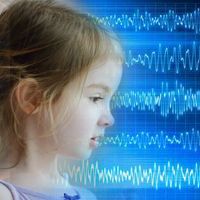Article
Examining the Relationship Between Epilepsy and Autism Spectrum Disorder
Author(s):
Research has shown that comorbid epilepsy and autism spectrum disorder is fairly common, with several factors appearing to influence risk.

During the NDC Symposium-Neurobiology of Disease in Children: Session I: Clinical Aspects at the 43rd Annual Child Neurology Society Meeting, held in Columbus, OH, October 22-25, Roberto Tuchman, MD, delivered a presentation that looked some of the mechanisms shared by epilepsy and autism spectrum disorder (ASD) that lead to overlapping symptoms, and reviewed current research on the prevalence of comorbid epilepsy and ASD in children.
Tuchman is the director of the Brain Development Network at Miami Children’s Hospital Dan Marino Center, and professor I the Department of Neurology and Psychiatry & Behavioral Health at Herbert Wertheim College of Medicine, FIU.
He noted that ASD-epilepsy co-diagnosis is fairly common, with one study using data from the nationwide Norwegian Patient Register (n=731,318) found that 11.2% of children diagnosed with ASD also had epilepsy, and 6.1% of children with epilepsy had a co-existing diagnosis of ASD. Another study revealed that intellectual disability (defined for the study as an IQ<70) is a clinical feature shared by ASD and epilepsy. In that study (a meta-analysis of 24 studies) researchers found that nearly 1 in 5 (21.4%) patients with ASD and intellectual disability also had epilepsy, compared with only 8% of patients with ASD and no intellectual disability.
Another pooled meta-analysis of 16 studies measuring rates of epilepsy in ASD found similar results. One group of 9 studies in which more than 70% of participants (n=1,583) had IQ<70 and were age 12 or older at follow up had an estimated epilepsy prevalence of 23.7%. Another subset of studies that included a smaller percentage of patients with intellectual disability had an estimated epilepsy prevalence of only 8.9%.
A study published by Tuchman and colleagues in Pediatrics in 1991 found the highest cumulative risk of epilepsy by age 10 (67%) in children with ASD, severe intellectual disability, and cerebral palsy. In children with ASD and severe intellectual disability, the cumulative risk of epilepsy by age 10 was 27%. A study by Bolton et al. in The British Journal of Psychiatry which looked at a cohort of 150 individuals with ASD from 1950 to 1985 found 22% of participants had epilepsy, with a mean age of seizure onset of about 13 years old (and the majority occurred after age 10). The authors reported that “epilepsy was more common in those with intellectual disability, low levels of language, and in females. Presence of epilepsy in the proband was a significant predictor of a relative having the broader autism phenotype.”
A paper by Viscidi et al in PLoS One found that age and cognitive ability were independently associated with epilepsy risk in a cohort of nearly 6,000 children with ASD. They reported that “children age 10 or older had 2.35 times the odds of being diagnosed with epilepsy (p=.001) and for a one standard deviation increase in IQ, the odds of having epilepsy decreased by 47% (p=.001).”
The relationship between the disorders is maintained when looking at ASD risk and prevalence in children with epilepsy. Several recent studies in which children with a diagnosis of epilepsy were also screened for ASD found prevalence rates of 15%-37%. A study looking at ASD prevalence in 555 patients in the Connecticut Epilepsy Cohort found that although 5% of all individuals met the criteria for ASD, that number increased to 10% in children whose seizures began before age 2, and to 13.8% in children with IQ<80. Results from a nationally representative population-based study published by Rai et al. in Epilepsia showed that ASD prevalence in the population of individuals with epilepsy 16 years and older was 8.1%. After adjusting for verbal IQ, an individual with epilepsy had a sevenfold increase in the odds of having an autism spectrum disorder.
Tuchman identified several questions to guide research on epilepsy prevalence in children with ASD, including “Why does ASD frequently travel along with epileptic encephalopathy?” and “What is the contribution, added effect, of epilepsy or Interictal Epileptiform Discharges (IEDs) on the development of ASD?” Similar questions for research on ASD prevalence in children with epilepsy included “Why do children some children with epilepsy and intellectual disability or with an epileptic encephalopathy not develop ASD?” and “Are there any protective factors that affect risk?”
He concluded by identifying perhaps the most important question of all for this patient population, “Does epileptic activity contribute to worse outcomes above and beyond what would be expected from the underlying etiology” of ASD?





